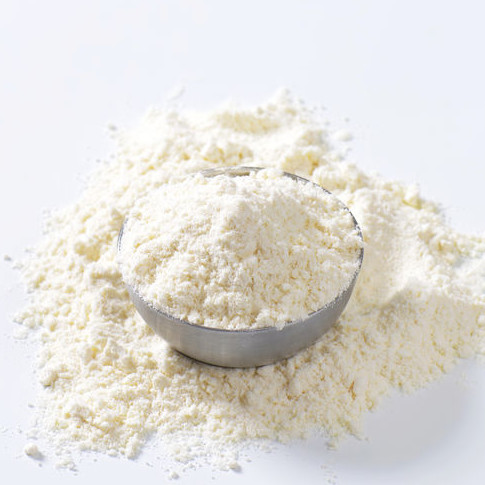
Flour Quality
What is Flour Quality?
Flour quality encompasses all measurable or quantifiable parameters that are related to wheat or any cereal flour used to produce baked goods, snacks and many other products. In the baking industry, flour quality is evaluated on a daily basis, both at laboratory and production line level.
Parameters that are used to determine flour quality include:1
- Physiochemical characteristics: protein content, wet gluten content, ash content as indicator of extraction rate, moisture level, enzymatic activity, particle size distribution
- Empirical rheological properties: mixing stability, resistance to deformation forces, elasticity, extensibility, optimum water absorption
- Microbiological indicators
- Presence/absence of chemical hazards, such as heavy metals or mycotoxins
How it works
Wheat flour is unique in its ability to form a viscoelastic and cohesive mass when mixed with water, and hold the gas produced by yeast during dough proofing and baking. This is attributable to the protein content and, even more importantly, to the specific protein composition, being a combination of the gluten storage proteins gliadin and glutenin.
Flour quality of wheat related to breadmaking performance is usually determined by four major factors:2,3
- Protein content (quantitative factor): Protein quantity in the wheat kernel is mainly dependent on cultivar, soil type, soil nutrients supplementation, and crop growth conditions (e.g. climate conditions).
- Composition of gluten-forming proteins (glutenins-to-gliadins ratio): Upon hydration, gliadins behave as a very extensible material, almost a viscous liquid, while glutenins as a cohesive solid. Although both influence gluten behavior, it is the larger polymeric glutenins that wield the greater influence on gluten quality.
- Molecular size distribution of glutenins: High-molecular-weight (HMW) glutenin subunits have a major role in dough rheology and gluten strength.
- Amount and location of cysteine residues of gluten-forming proteins that contain thiol groups (i.e. oxidation potential).
Little can be done at the bakery level regarding the first three factors listed above, as they mainly depend on nature and cereal genetics. However, bakers do have a chance to alter the oxidation potential of flour. This is of vital importance when using low-quality flours with somewhat weak gluten-forming proteins.
Bread’s porous and aerated structure is mainly due to the gluten in wheat. Gluten gives dough its unique viscoelastic nature that is able to retain gases and allow pizza dough to be stretched. It is important to recognize that the structure of gluten is held together by sulfur-to-sulfur bonds (S-S) created by cysteine residues. Without enough sulfur and disulfide bonds, bread has a very low gas retention capacity, resulting in something more like a brick than a light finished product.
Application
Flour quality in the baking industry is often related to the breadmaking performance or baking potential of wheat flour. In such cases, flour quality is expressed in terms of product volume and crumb grain structure. ‘High quality’ flours intended for bread production often yield the highest specific volumes with standard formulations.
What defines flour quality for a baker is highly variable and subjective, and related to the desired end product. What can be universally said about flour quality is that it needs to be consistent throughout time.
From the bakers’ perspective, their first desire is for the flour they purchase to show consistent and predictable baking performance at production line level. Flour with a high degree of variability in performance results in variability in product quality as well as time, money and waste spent making adjustments.
The quality of flour intended for bread production can be modified and improved by using dough conditioners and enzymes. Amylases and oxidizing agents are the most frequently used flour improvers used nowadays.3
Common composition of flour from hard wheat
| Component | Percent flour weight (%) |
| Moisture | 13.0 – 14.0 |
| Intact starch | 63.0 – 72.0 |
| Damaged starch | 5.0 – 9.0* |
| Protein (total) | 11.0 – 14.5 |
| Water-soluble proteins (albumins and globulins) | 20.0 (of total protein) |
| Gluten-forming proteins (insoluble fraction comprised of gliadins and glutenins) | 80.0 (of total protein) |
| Non-starch polysaccharides (NSPs) | 3.0 – 4.0 |
| Pentosans / hemicellulose (arabinoxylans) | 65.0 – 70.0 (of total NSPs) |
| β-glucans | 33.0 (of total NSPs) |
| Cellulose | Very low (found in bran) |
| Lipids | 1.0 – 2.5 |
| Polar (glycolipids and phospholipids) | 55.0 (of total lipids) |
| Non-polar (triglycerides, FFAs, mono- and di-glycerides) | 45.0 (of total lipids) |
*Actual amount depends on kernel hardness, grain tempering and milling conditions, and extraction rate
Technical specifications for bread flour
Typical bread flour physicochemical attributes from 74% extraction hard wheat:
| Component | Value |
| Moisture | 13.5% |
| Protein content (N x 5.7) | 12.5% |
| Ash | 0.45 – 0.55% |
| Wet gluten | 27.0 – 32.0% |
| Dry gluten | 10.0 – 12.0% |
| Falling Number | 350 – 450 |
| Particle size index, PSI | 13.0 – 16.0% |
| pH | 5.8 – 6.2 |
References
- Finnie, S., and Atwell, W.A. Wheat Flour Handbook Series, 2nd edition, AACC International, Inc., 2016.
- Carson, G.R., and Edwards, N.M. “Criteria of Wheat and Flour quality.” Wheat Chemistry and Technology, 4th edition, AACC International, Inc., 2017, pp. 97–123.
- Putseys, J.A., Schooneveld-Bergmans, M.E.F. “Enzymes Used in Baking.” Industrial Enzyme Applications, Wiley-VCH Verlag GmbH & Co. KGaA, 2019, pp. 97–118.

